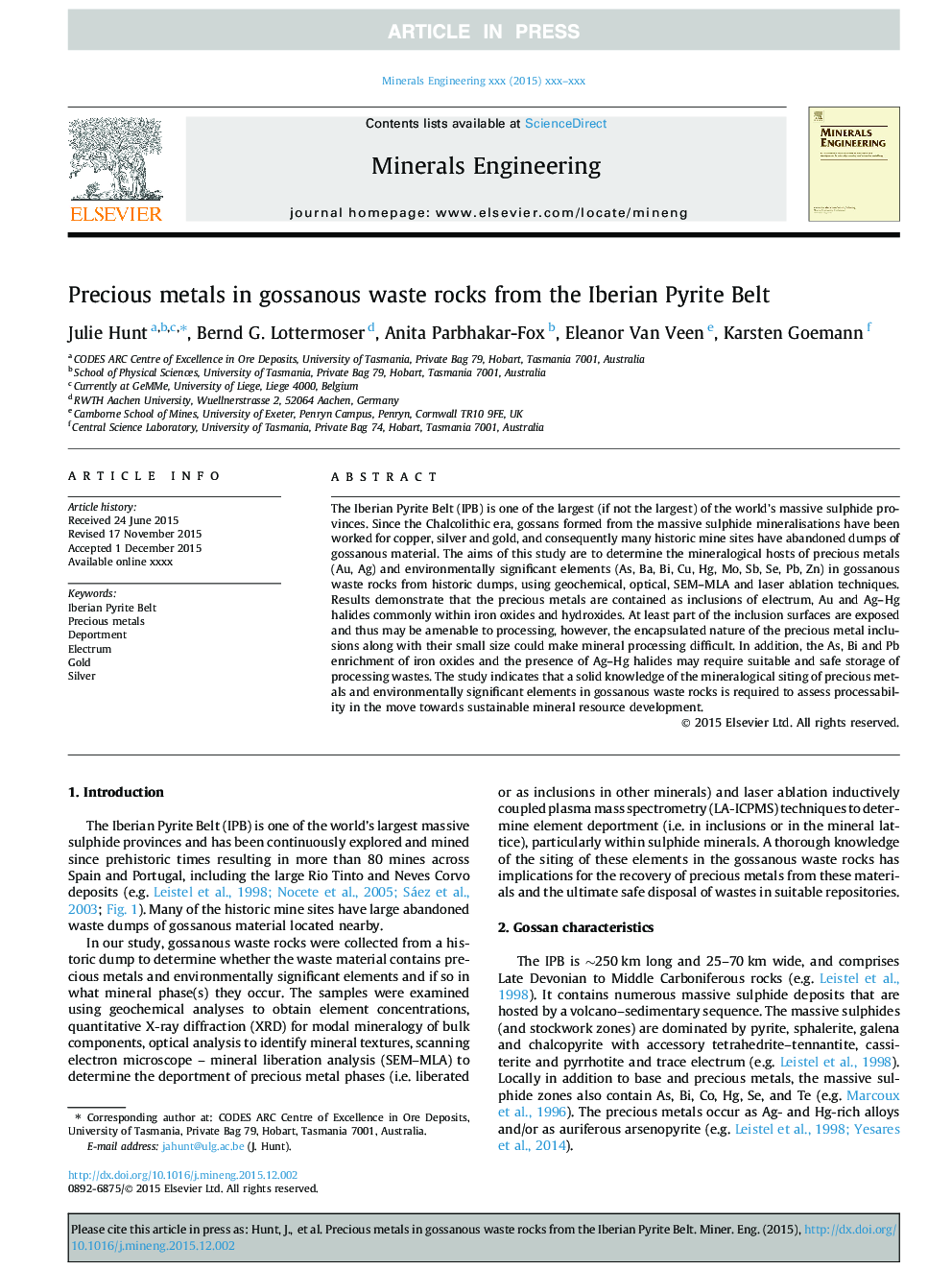| Article ID | Journal | Published Year | Pages | File Type |
|---|---|---|---|---|
| 6672949 | Minerals Engineering | 2016 | 9 Pages |
Abstract
The Iberian Pyrite Belt (IPB) is one of the largest (if not the largest) of the world's massive sulphide provinces. Since the Chalcolithic era, gossans formed from the massive sulphide mineralisations have been worked for copper, silver and gold, and consequently many historic mine sites have abandoned dumps of gossanous material. The aims of this study are to determine the mineralogical hosts of precious metals (Au, Ag) and environmentally significant elements (As, Ba, Bi, Cu, Hg, Mo, Sb, Se, Pb, Zn) in gossanous waste rocks from historic dumps, using geochemical, optical, SEM-MLA and laser ablation techniques. Results demonstrate that the precious metals are contained as inclusions of electrum, Au and Ag-Hg halides commonly within iron oxides and hydroxides. At least part of the inclusion surfaces are exposed and thus may be amenable to processing, however, the encapsulated nature of the precious metal inclusions along with their small size could make mineral processing difficult. In addition, the As, Bi and Pb enrichment of iron oxides and the presence of Ag-Hg halides may require suitable and safe storage of processing wastes. The study indicates that a solid knowledge of the mineralogical siting of precious metals and environmentally significant elements in gossanous waste rocks is required to assess processability in the move towards sustainable mineral resource development.
Related Topics
Physical Sciences and Engineering
Chemical Engineering
Chemical Engineering (General)
Authors
Julie Hunt, Bernd G. Lottermoser, Anita Parbhakar-Fox, Eleanor Van Veen, Karsten Goemann,
